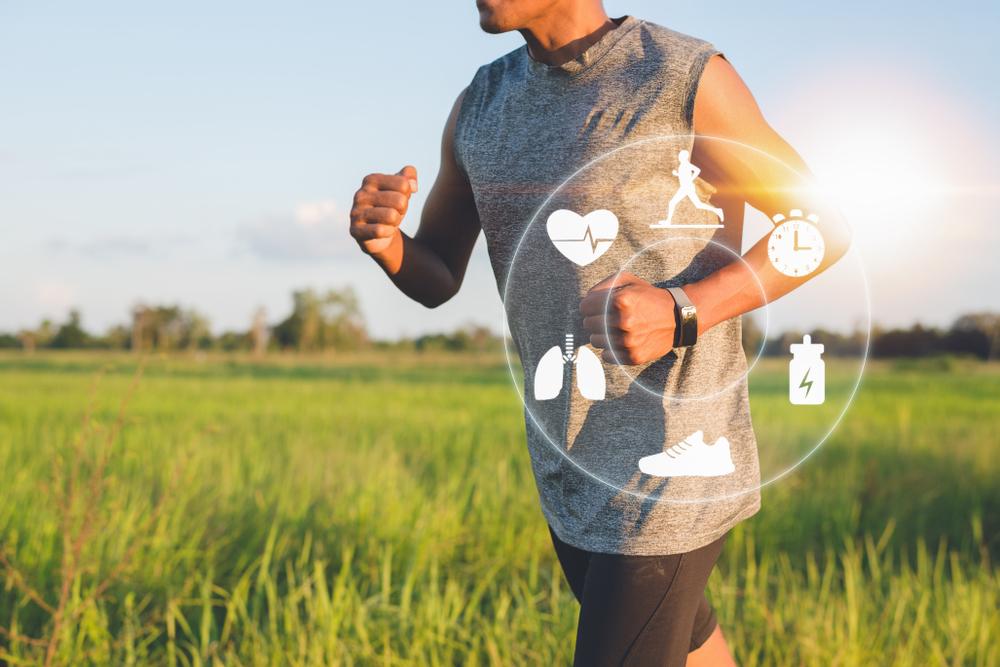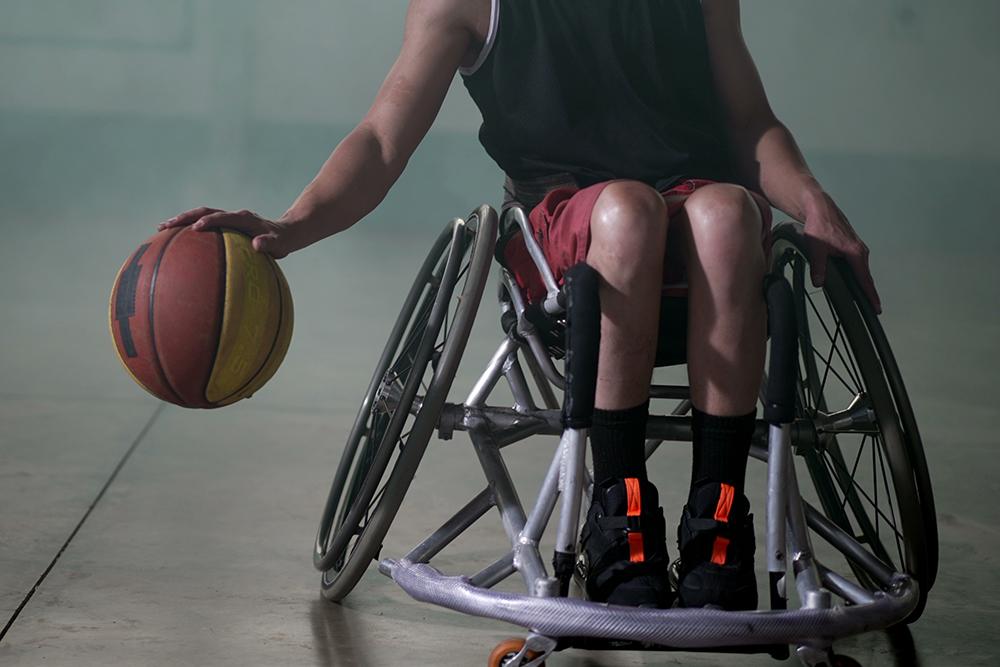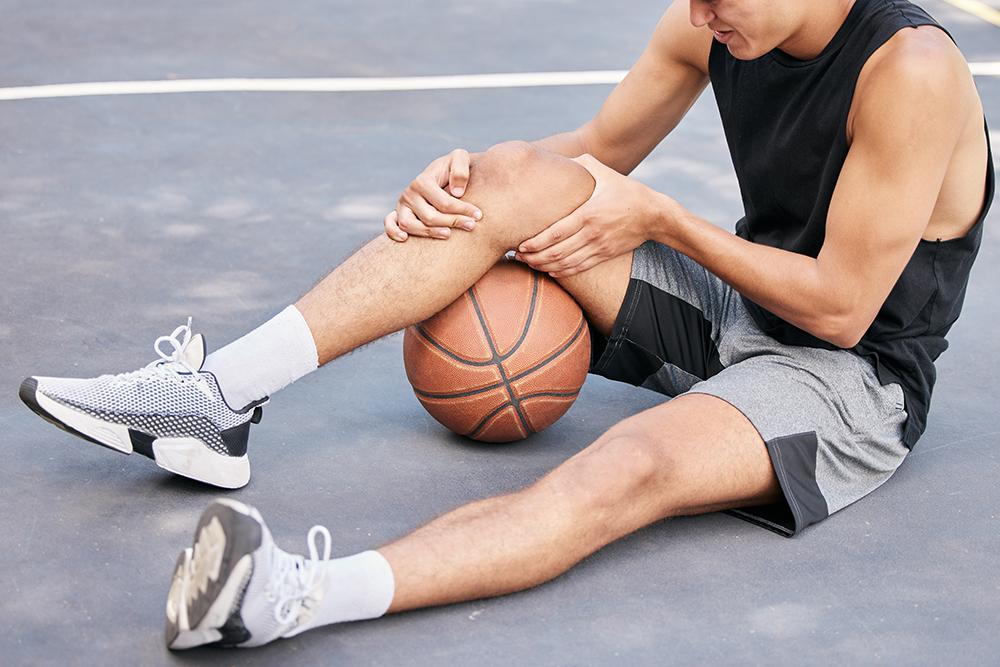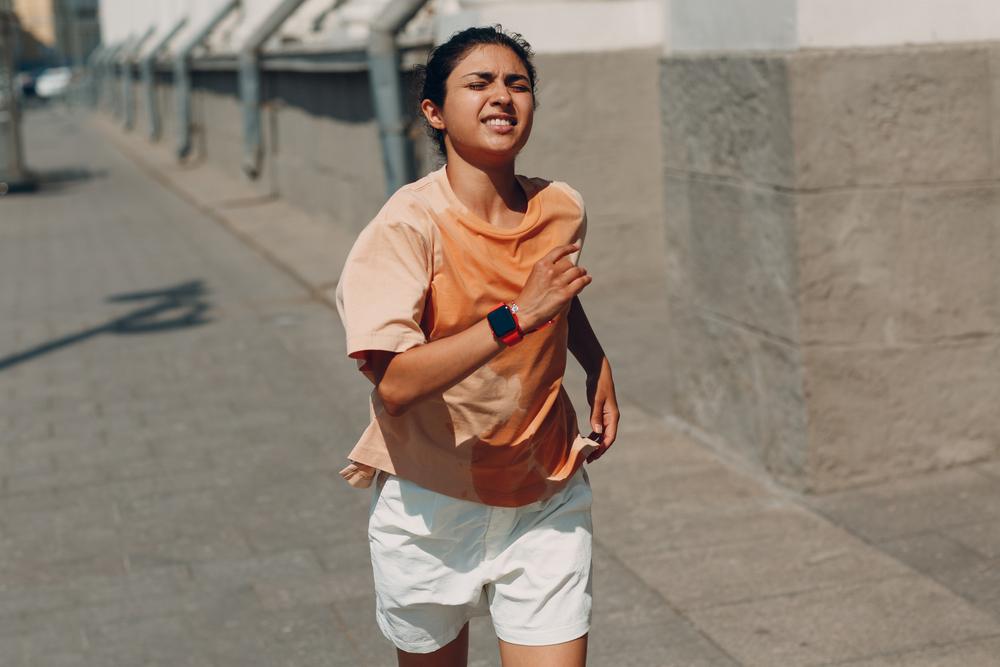 Wearables are becoming more and more common amongst amateur and professional athletes, but should student-athletes be using these technologies?
Wearables are becoming more and more common amongst amateur and professional athletes, but should student-athletes be using these technologies?
Dr. Laura Lewis is the Director of Science at the U.S. Anti-Doping Agency (USADA) and her early research was done on cycling and power meters—devices that measured how much power a cyclist could put out. Because of her interest in being able to accurately measure various aspects of fitness, she’s followed the development of wearables for monitoring athlete health and fitness with great interest.
But are any of these new wearables worth the money? What can they tell athletes about themselves? Is the data helpful or harmful to a young athlete? Here, we answer some of the most pressing questions caregivers and coaches are asking about wearables.
What are wearables?
“I consider wearables to be any type of device that tracks information about your outputs,” says Lewis. “This can be a watch that measures heart rate or counts steps, a chest strap that monitors heart rate, a pod in your shoe that counts steps, a power meter on your bike—anything that’s giving you metrics about work you’re doing.”
If you wear any kind of smartwatch or fitness tracker, you’re using a wearable. There are more expensive models, including rings and watches and straps, that require subscriptions to access the data that they collect. There are patches and even subcutaneous devices that measure everything from sweat rate to hormone fluctuation to blood sugar levels. Essentially, if it tracks any aspect of health or fitness, it’s a wearable.
Wearables might seem like they’re everywhere, and indeed, since smartwatches became popular, they are worn by many people. However, Lewis points out that the technology behind wearables and their accompanying apps is still in its infancy. For example, sleep trackers are still using movement (and heart rate variability in some models), which is a far cry from the technology used in a sleep lab to measure sleep via brain waves.
“This is all so new,” says Lewis. “But the wearable companies tend to talk about their technology as though it’s been around forever. We’re still learning a lot and we’ve barely scraped the surface with what this technology is and what it can do. For example, heart rate variability is one of the big metrics that wearable companies measure, but we know that measuring it is very ‘noisy,’ meaning it’s not always accurate.”
What do wearables track?
 Most commonly, wearables track basic metrics including step count. Often, wearables like smartwatches can track wrist-based heart rate, though depending on the device (and the size of your wrist), these may or may not be very accurate. Many devices now track heart rate variability—essentially the timing between your heartbeats—in addition to heart rate. Many smartwatches and other wearables also track sleep and temperature. Some track motion to guess at the types of workouts you’ve done. Others estimate calories burned based on movement and heart rate. Some use GPS to track distance traveled, while others rely on the swing of your arm to simulate step count.
Most commonly, wearables track basic metrics including step count. Often, wearables like smartwatches can track wrist-based heart rate, though depending on the device (and the size of your wrist), these may or may not be very accurate. Many devices now track heart rate variability—essentially the timing between your heartbeats—in addition to heart rate. Many smartwatches and other wearables also track sleep and temperature. Some track motion to guess at the types of workouts you’ve done. Others estimate calories burned based on movement and heart rate. Some use GPS to track distance traveled, while others rely on the swing of your arm to simulate step count.
However, the data they collect isn’t always perfect. “When I look at power meters on the bike today, what I’m seeing is that they are typically not very well calibrated, and people aren’t getting reliable data,” says Lewis. The same is true of many wearables, especially the less-expensive ones, or the smartwatch-based wearables that add health tracking as an afterthought.
How valuable is the data that wearables provide?
If athletes and their support team all have access to the data from a wearable, it can provide helpful information that can allow athletes to train smarter and catch early warning signs that they might be overdoing it. It may also provide valuable data about sleep habits and provide insight into what helps or hinders sleep. And if it senses temperature or heart rate variability, it may be able to let you know if you’re starting to get sick.
“Wearables can help us catch things like if an athlete is suddenly sleeping really poorly, or if they’re not recovering as well,” Lewis says. “You may already be feeling like something is off, but having the data to back up that feeling can be helpful. Activity tracking can also be helpful, especially if an athlete is on multiple teams or doing multiple sports, since it can provide coaches with a clearer picture of how much work their athletes are actually doing.”
Are there any downsides to wearables?
Knowledge is power, but caregivers and coaches do need to beware of creating an obsession. Unfortunately, an overload of data can contribute to issues like orthorexia, an unhealthy obsession with ‘healthy’ eating, and orthosomnia, an unhealthy obsession with getting perfect sleep. What starts out as a desire to get healthier can quickly become unhealthy.
“If you’re getting into bed and checking your phone so you can use the app that connects to your wearable before you go to sleep, that’s counter to what’s best for getting high-quality sleep,” Lewis points out. “It’s better to disconnect and stay disconnected, which also means not instantly checking the app in the morning to see how well it’s reporting you slept.”
Lewis also notes that we should never outsource how we’re feeling to a wearable: Make sure you’re also checking in with yourself regularly and doing your own assessment rather than relying on a device to tell you how well recovered you are in the morning.
Metrics also don’t exist in a vacuum. Even the most complicated wearable can’t read your thoughts or your emotions, and it can’t take every piece of data about you into account. It can only read certain metrics, which means it only is a small part of the whole equation when it comes to answering the question, ‘How are you?’
Especially for young athletes, this can be a negative because it takes away an opportunity to focus on how you feel physically and emotionally. Instead, you can look to the connected app on your phone to be told how you feel today—and that’s an uninformed way to live, says Lewis.
“These wearables should never replace keeping a training diary that you fill out personally,” she says. “So many elite athletes will talk about how they look back in their training diary to figure things out, and how helpful having that record is.”
Finally, wearables take time and consistency of use in order to provide usable data. That means you need to wear it for a few weeks before it can give you information that’s accurate for you. And you have to wear it consistently, Lewis points out. This isn’t easy when you also need to remember to keep your device charged, and in some cases, make sure that you’re wearing it positioned properly to get the most accurate reading possible.
How to decide which wearable makes sense for you
Before you buy the wearable with the most five-star reviews, ask yourself these questions and look for a wearable that will best help you hit your goals:
Is it appropriate for your sport? There are some wearables—watches, straps and rings—that climbers and swimmers obviously won’t be able to wear during their sport, says Lewis. If you can’t use the wearable to collect data during training, the information it is able to glean outside of training will be significantly less useful.
What are you actually going to do with the data? If you’re a student-athlete, you likely have a fairly regimented practice and competition schedule, so if your wearable tells you that you need a rest day, will you be able to act on it? “Are you going to change anything based on what your watch said? Or are you going to override it based on what you feel or what you have to do?” Lewis asks. If it’s the latter, it may not be worth getting a wearable since you aren’t able to use it the way it’s intended.
Is it worth the money? Wearables can get expensive, especially when they have subscriptions attached, says Lewis. “Is it worth hundreds of dollars a year versus the free data you can get on your phone’s native health app?”
Is anyone else going to use this data? Some wearables and their accompanying apps make it easy to share information with coaches and/or parents. Lewis suggests thinking about if that’s desirable, and if the wearable you’re looking at allows you to do so.
Do you need the accountability of a wearable? If you’re a serious student-athlete, you likely don’t need the accountability that a wearable can provide when it comes to getting your steps in for the day, or sleeping as optimally as possible. But having the wearable can be a physical reminder to take your health seriously throughout the day, says Lewis. “It can serve as a reminder to check in with your health and fitness goals.”
Should you get a wearable?
It depends, says Lewis. If it’s in your budget, you have a clear plan on how to use it, and you know your athlete is not likely to get obsessed with the data, then a wearable can be informative and potentially optimize your training. However, if you don’t have a real reason for wanting one other than ‘my friends are all using them’ or ‘they look cool’ (two of the main reasons that researchers found teens opted for using a wearable), then it may not be worth the money.
Especially when it comes to wearables that require subscriptions, make sure you’re taking into account the recurring cost of the device. While many smartwatches and fitness trackers are a one-time purchase, the wearables that offer more in-depth analysis and more accurate technology tend to require subscriptions.
Do your homework and make your own list of pros and cons before making your purchase. Like most things, there are benefits and drawbacks to using a wearable, so you need to decide if it’s right for your athlete in their current phase of sport.
_______________________
Takeaway
While wearables have surged in popularity, student-athletes do not necessarily need a wearable or fitness tracker in order to see performance benefits. Depending on the sport, a tracker or wearable may not be able to measure the metrics you’re looking for, and too much focus on certain metrics, like sleep or step count, can potentially lead to more anxiety versus an improvement in health outcomes.



